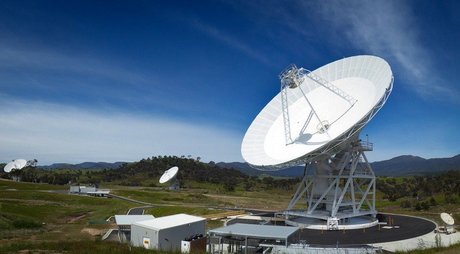CSIRO, NASA partner on space comms

A new antenna dish, recently completed at the Canberra Deep Space Communication Complex (CDSCC), will assist NASA and other agencies with future missions into the cosmos.
The $120 million project is managed by CSIRO and is part of NASA’s Deep Space Network. Deep Space Station 36 (DSS36) is the second of two new 34 m antennas constructed at Tidbinbilla in Canberra. The first of the two new antennas, Deep Space Station 35, commenced operations on 1 October 2014.
The station is expecting to handle an increasing number of deep space missions in the coming decades, including NASA’s future plans to send humans to Mars in the 2030s.
Assistant Minister Craig Laundy, representatives from NASA and the Jet Propulsion Laboratory, the US Embassy, industry partners, CSIRO and local school students officially marked the milestone with a ribbon-cutting ceremony.
“The new antennas will play an important part in NASA’s ‘Journey to Mars’ by providing two-way communication capacity for human and robotic missions, enabling science, tracking and command data to be sent back and forth from Earth,” said Laundy.
“As well as supporting more deep space missions to Mars, the station’s future is also likely to include tracking missions to Jupiter’s moon Europa and supporting a move towards a return to human spaceflight beyond Earth orbit in the next decade.”
CSIRO manages CDSCC on behalf of NASA and the Jet Propulsion Laboratory as part of the Deep Space Network.
“CSIRO has partnered with NASA for 50 years, from capturing man’s first steps on the moon to the first images of Pluto,” said Larry Marshall, CSIRO chief executive.
“Our enduring global collaboration exemplifies two pillars of Strategy 2020, built on the bedrock of science excellence driving innovation to unlock the wonders of space exploration.”
In 1965, CDSCC helped to receive the first close-up pictures of the surface of Mars, taken by the Mariner 4 spacecraft. Since then, it has been involved in hundreds of missions, including the Apollo missions to the Moon and the historic Voyager missions to the outer planets and beyond.
In August 2012 it carried the signals confirming the landing of the rover Curiosity on Mars, and in 2015 it received some of the first images of Pluto from the New Horizons spacecraft.
Construction of the two new antennas together represented a significant investment in Australia, of which 40% went to local industry to complete civil, electrical, HVAC, electronic, integration and calibration works.
Customised rugged tech shaping the next era of defence comms
Rugged computing platforms are becoming central to how armed forces protect communication...
A guide to aquatic survival this summer
While most Australians are planning aquatic adventures this summer, less than a third are...
Maher Terminals enhancing operations with private wireless
Maher Terminals chose the Nokia Edge platform because it needed a secure, reliable,...



